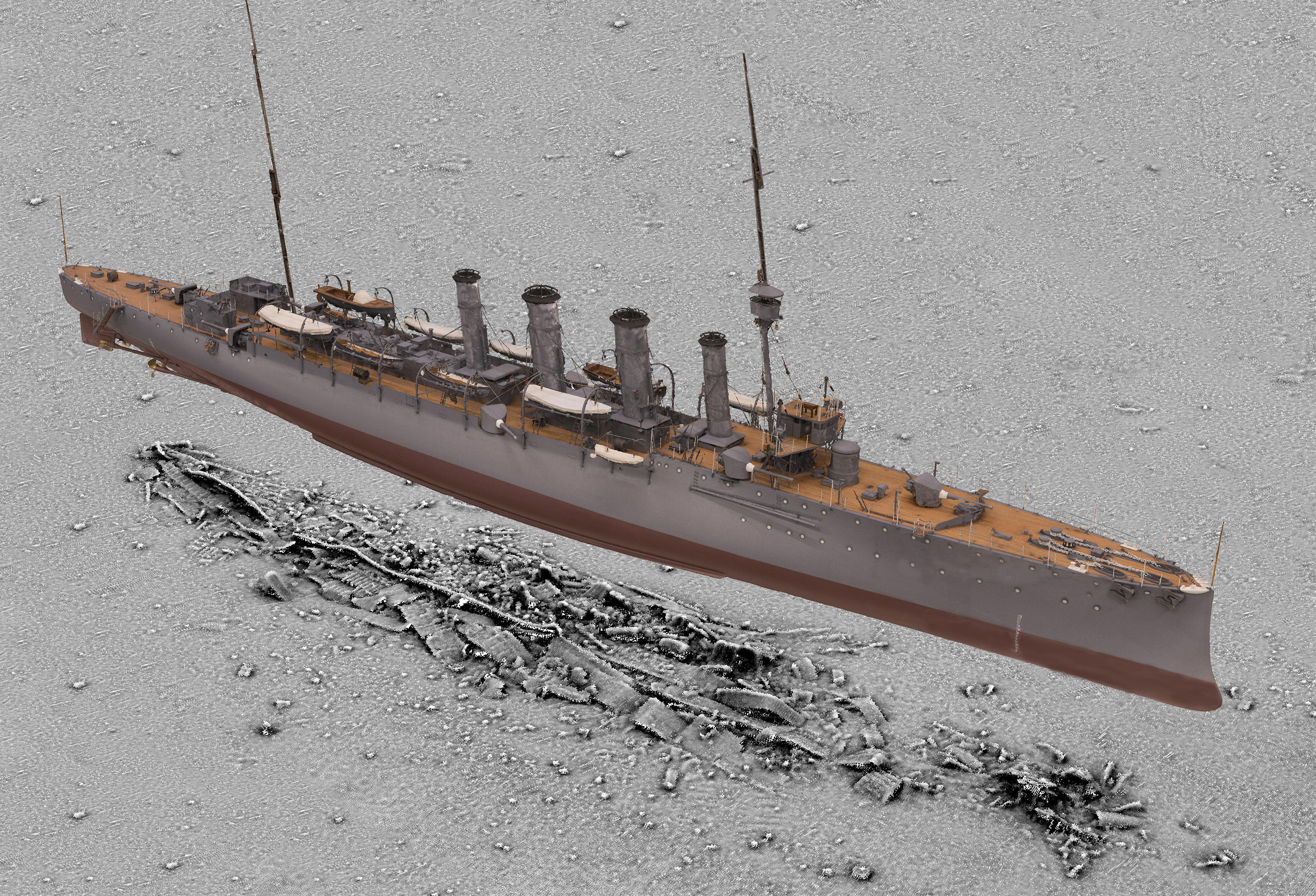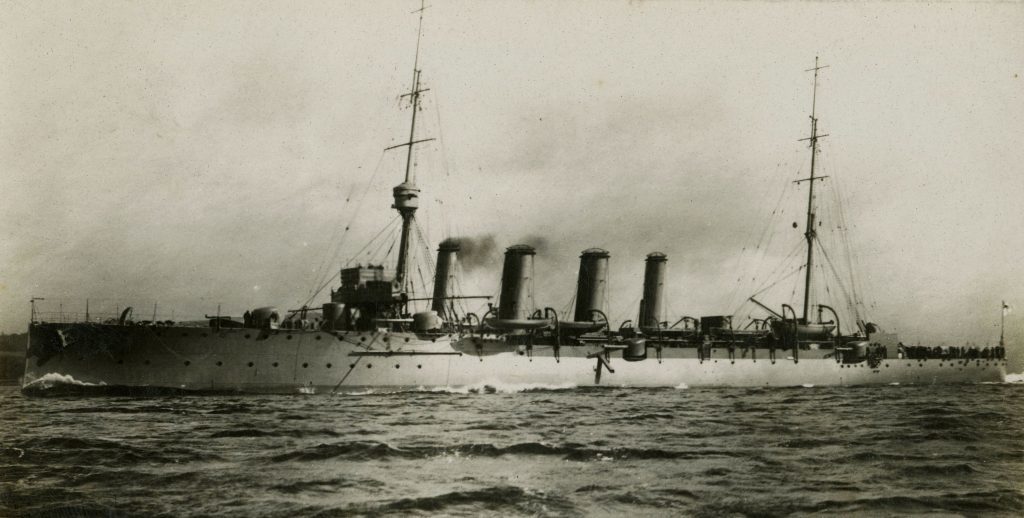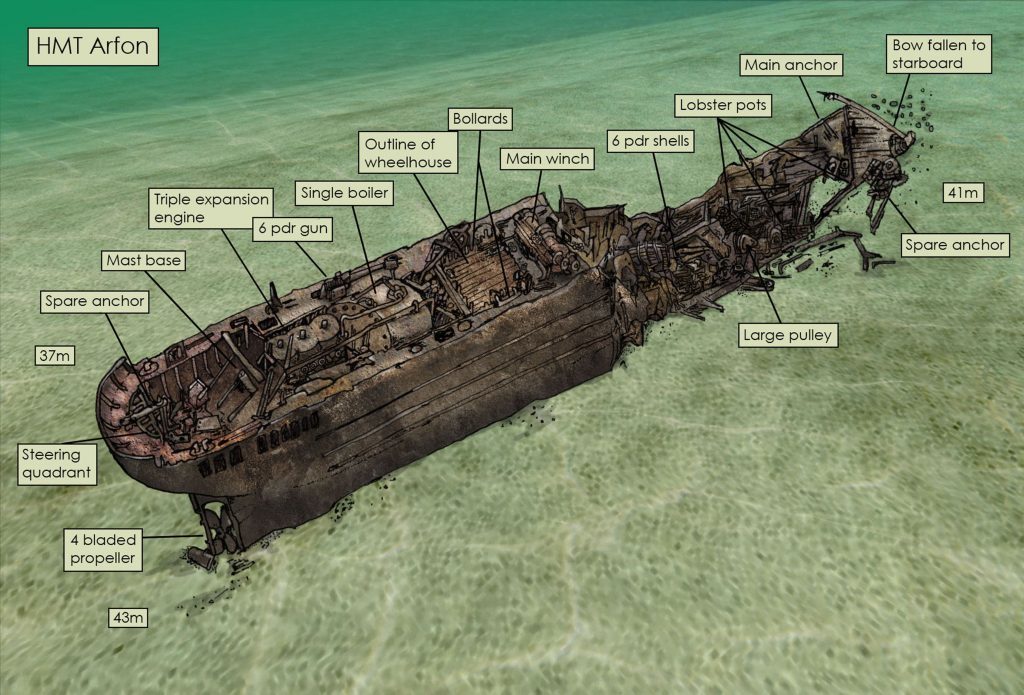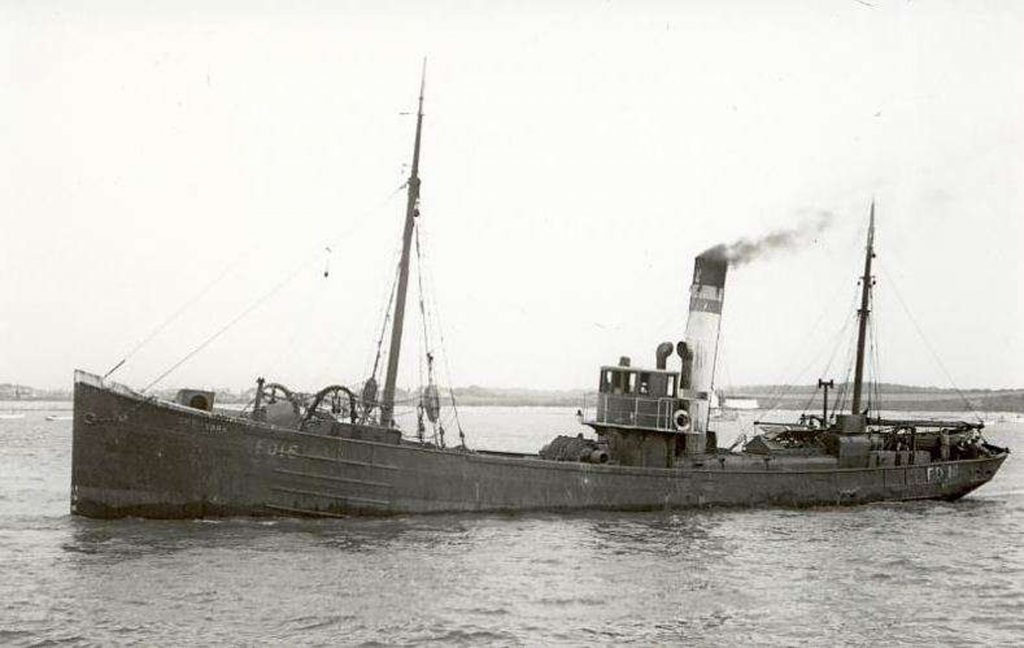
A WRECKED British ship which fought in the Battle of Jutland has been brought “back to life” with digital technology to mark the centenary of its sinking.
HMS Falmouth fought in the famous First World War naval clash which took place from May 31 to June 1 1916, but sank in Bridlington Bay, East Yorkshire, just a few weeks later on August 20 after being torpedoed by U-boats.
A century on, government heritage agency Historic England has used 3D technology and a new seabed survey of the wreck to recreate the ship in its final resting place and bring heritage lost beneath the waves back to life.
The new seabed survey of the site, the only substantial wreck of a Royal Navy warship which fought in the Battle of Jutland now lying in English waters, was carried out in partnership with the Maritime and Coastguard Agency.
Results from the survey have been combined with a digital 3D image of a builder’s model of HMS Falmouth, held by the Imperial War Museum at Chatham Historic Dockyard, to produce the 3D image of the ship underwater.
Historic England has also commissioned new research into the history and significance of the ship, which has uncovered personal recollections and photographs and collected together official documents which had been split between archives.
HMS Falmouth fought at Jutland, a clash which saw the loss of 6,094 British seamen and 2,551 Germans, as part of Vice Admiral David Beatty’s battle cruiser fleet, engaging several German light cruisers and torpedoing the battle cruiser Lutzow.
The battle was a pivotal moment in the war, as the Germans failed to break the blockade of the North Sea by the British.
HMS Falmouth sank a few weeks later after being struck in two separate torpedo attack by German U-boats, with 12 crew members losing their lives.
Wayne Cocroft, senior investigator at Historic England, said: “Throughout the First World War the sea off our coast was an intensely-fought battlefield with many casualties lost within sight of the shore.
“Aside from war memorials to those lost at sea, the traces of maritime battles are invisible to all but a few.
“Modern technology is now being used to make our underwater heritage accessible to all.
“Digital 3D modelling and computer visualisation can recreate the appearance of lost vessels aiding our understanding and remembrance of this largely forgotten conflict.”
Dr Antony Firth, director of Fjordr Limited, which carried out the new research into HMS Falmouth’s history, said: “The wreck of HMS Falmouth is a key feature of the First World War heritage of England’s East Coast and is important for being the only known survivor of all the Town Class light cruisers.
“As well as being a memorial to those who served and died, it is a reminder of the UK’s industrial and maritime prowess in the early 20th century.”
The digital 3D model of the wreck can be viewed on the Historic England website: www.historicengland.org.uk
World War One trawler granted protection
A fishing trawler which sank while mine-sweeping during the First World War has been granted protection from salvage and souvenir hunters.
The steam trawler Arfon was only discovered in 2014, having remained untouched on the seabed for nearly 100 years.
The boat, based at Portland Harbour Naval Base, swept mines laid by German U-boats in the shipping lanes off the Dorset coast until 10 of its 13 crew members died when it struck a mine in April 1917.
Historic England said the trawler was “exceptionally well preserved”, with the mine-sweeping gear, deck gun and engine room still intact on the seabed off St Alban’s Head.
But the government heritage agency feared the Arfon, built in Goole, in the East Riding of Yorkshire, in 1908, could be vulnerable to uncontrolled salvage like similar wrecks from the period.
The Department for Culture, Media and Sport (DCMS) has granted it protection under the Protection of Wrecks Act 1973, which means access to the site is restricted to divers with a licence from Historic England.
Joe Flatman, the body’s head of listing programmes, said: “The Arfon shipwreck is a rare survivor of a type of vessel once very common around the coastline of Britain but which has now entirely disappeared, surviving only in documents and as wrecks like this one.
“Trawlers, minesweepers and other coastal patrol vessels played a crucial role in keeping the sea lanes around the British Isles open during both world wars, a part of the war effort that is often overlooked.
“The crews who served aboard such vessels faced tremendous dangers with unstinting bravery and devotion to duty.”
The finders of the wreck, Martin and Bryan Jones, who run a family dive charter business, are working to secure the site’s preservation.
Martin Jones said: “We are delighted to be working with Historic England to protect and investigate the Arfon and we’re planning a special commemoration to mark the centenary of its sinking next April.”
READ MORE

Enjoy the convenience of having The Sunday Post delivered as a digital ePaper straight to your smartphone, tablet or computer.
Subscribe for only £5.49 a month and enjoy all the benefits of the printed paper as a digital replica.
Subscribe

